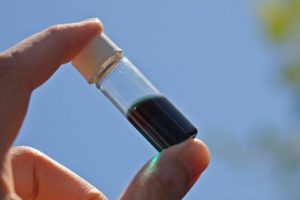
Solar Energy and Electronic Materials
Our lab has a strong focus on next-generation photovoltaic and energy storage materials. Photovoltaics are semiconductors materials that absorb light and convert that light into electricity.
We specialize in the materials and physical chemistry of thin film semiconductors that are suitable for a wide range of energy conversion technologies. These types of thin films can be cast from solution onto flexible substrates, enabling new form factors, while reducing balance-of-systems costs for consumers, and capital costs for manufacturers.
Among the materials we study are organic semiconductors, hybrid organic-inorganic perovskites, and colloidal quantum dots. These systems can be used in various optoelectronics applications and offer their own sets of unique advantages.
Much of the solar cell work in our lab takes advantage of our unique capabilities for scanning probe microscopy. We prepare and characterize thin film semiconductors, and semiconductor devices. We have our own dedicated glove box, and help manage the shared fabrication and test facilities at the Clean Energy Institute at the University of Washington to allow for fabrication within a controlled, inert environment.
In addition to our unique capabilities for mapping local photocurrent, surface potential, and carrier lifetimes with combinations of optical and scanning probe methods, our group maintains facilities for time-resolved photoluminescence (TRPL), electroabsorption spectroscopy (EA), photoinduced absorption (PIA) and transient photovoltage (TPV) for studying the physics of charge generation and transfer.
